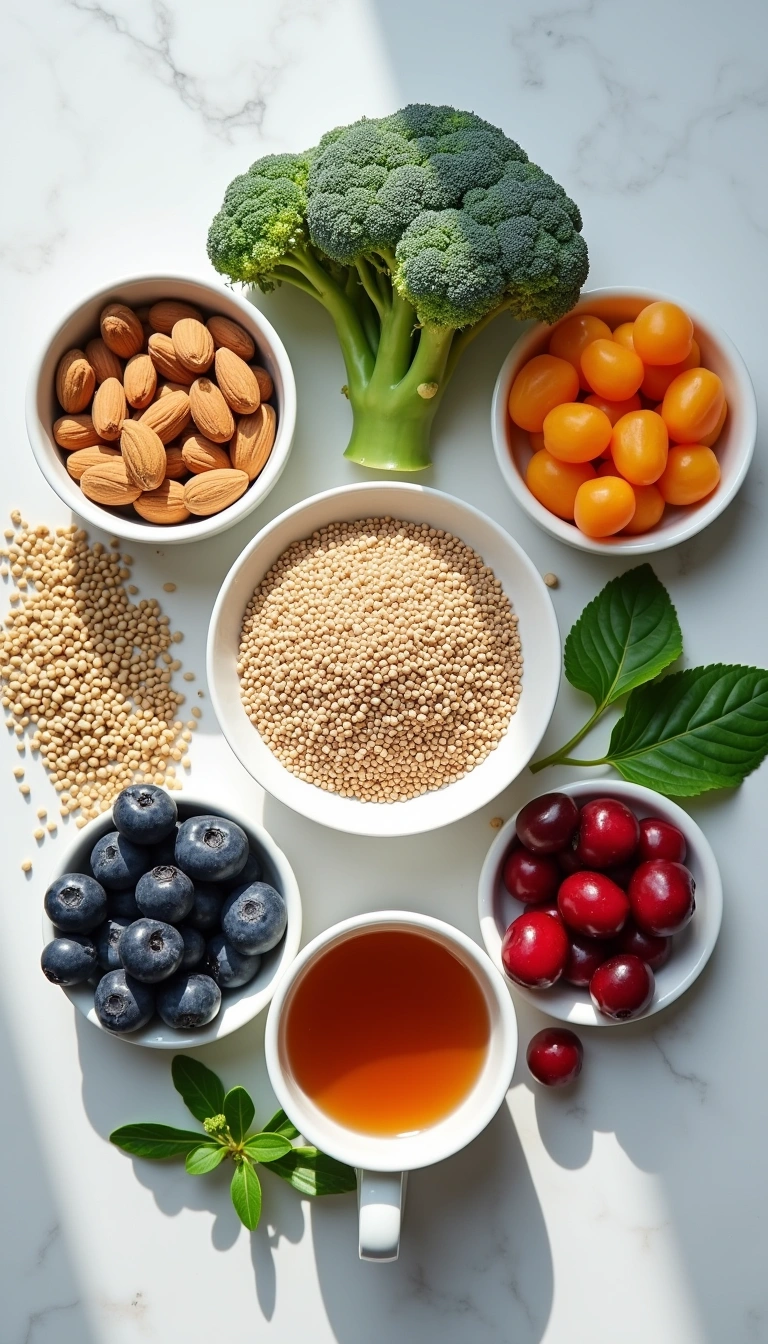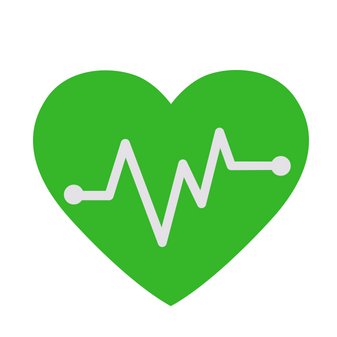Estrogen boosting foods can help restore your body’s natural hormone balance when levels drop due to menopause or other factors. Your hormones control everything from mood to energy levels. The right foods can make a real difference in how you feel. Let’s explore nature’s most powerful hormone-supporting options.
1. Add Flaxseeds to Your Daily Routine

Flaxseeds are tiny powerhouses packed with lignans, plant compounds that act like weak estrogens in your body. These compounds help balance your hormone levels naturally by mimicking estrogen when levels are low. Just two tablespoons of ground flaxseeds daily can provide significant hormone support.
You can sprinkle them on yogurt, blend them into smoothies, or mix them into oatmeal. Ground flaxseeds work better than whole ones because your body absorbs the nutrients more easily.
Take Charge of Your Health with The Home Doctor
Discover real-world remedies and first-aid solutions you can use when help isn’t around.
👉 Claim Your Home Doctor GuideTip: Grind fresh flaxseeds weekly and store them in your refrigerator to maintain their nutritional power.
2. Include Soy Products in Your Meals
Soybeans contain isoflavones, natural plant estrogens that can help fill the gap when your body’s estrogen production decreases. These compounds are especially helpful during menopause when hormone levels naturally decline. Tofu, tempeh, and edamame are excellent sources of these beneficial isoflavones. One serving of tofu contains about 20-35 mg of isoflavones.
Studies show that women who eat soy regularly often experience fewer hot flashes and other menopausal symptoms.
Takeaway: Aim for 1-2 servings of whole soy foods daily, such as a cup of soy milk or half a cup of tofu.
3. Enjoy More Sesame Seeds
Sesame seeds are rich in lignans, similar to flaxseeds, making them another excellent choice for natural hormone support. These tiny seeds also provide healthy fats and minerals that support overall hormone production.
Tahini, made from ground sesame seeds, is an easy way to add these nutrients to your diet. Two tablespoons of sesame seeds contain about 11.2 mg of lignans. You can also sprinkle whole sesame seeds on salads or stir-fries.
Tip: Buy hulled sesame seeds for better nutrient absorption and toast them lightly to enhance their nutty flavor.
4. Load Up on Cruciferous Vegetables
Broccoli, cauliflower, kale, and Brussels sprouts contain compounds that help your body process estrogen more effectively. While they don’t boost estrogen directly, they support healthy estrogen metabolism and balance.
These vegetables are rich in indole-3-carbinol, which converts to diindolylmethane (DIM) in your stomach. DIM helps your body break down estrogen into beneficial forms rather than harmful ones. Eating just one cup of broccoli provides significant amounts of these protective compounds.
Takeaway: Eat at least one serving of cruciferous vegetables daily, whether steamed, roasted, or raw in salads.
5. Choose Dried Fruits Wisely
Dried apricots, dates, and prunes contain natural phytoestrogens that can provide gentle hormone support. These fruits also offer fiber, vitamins, and minerals that support overall health and hormone production. Six dried apricot halves contain about 0.5 mg of phytoestrogens.
Dates are particularly rich in boron, a mineral that helps your body use estrogen more effectively. However, dried fruits are high in natural sugars, so portion control matters.
Tip: Limit dried fruit to 1/4 cup daily and choose unsweetened varieties without added sulfites.
6. Incorporate Healthy Fats from Nuts
Almonds, walnuts, and pistachios provide healthy fats that your body needs to produce hormones. These nuts also contain vitamin E, which supports hormone balance and may help reduce menopausal symptoms. Walnuts are especially beneficial because they contain omega-3 fatty acids that reduce inflammation and support hormone production.
A quarter cup of mixed nuts provides about 200 calories and substantial amounts of hormone-supporting nutrients.
Takeaway: Eat a small handful of mixed nuts daily, but watch portions since they’re calorie-dense.
7. Add Legumes to Your Plate
Chickpeas, lentils, and black beans are excellent sources of isoflavones and other phytoestrogens. These protein-rich foods also provide fiber and nutrients that support overall hormonal health. One cup of cooked chickpeas contains about 993 micrograms of phytoestrogens.
Lentils are particularly rich in lignans, while black beans provide both isoflavones and coumestans, another type of plant estrogen. These foods are versatile and can be added to soups, salads, and main dishes.
Tip: Soak dried legumes overnight and cook them in batches to save time during busy weeks.
8. Include Whole Grains in Your Diet
Oats, barley, and wheat contain lignans that provide mild estrogenic effects. Whole grains also supply B vitamins and fiber that support healthy hormone metabolism and balance.
Oatmeal is particularly beneficial because it contains beta-glucan fiber, which helps regulate blood sugar and supports hormone balance. One cup of cooked oatmeal provides about 0.4 mg of lignans. Choose steel-cut or rolled oats over instant varieties for maximum nutritional benefit.
Takeaway: Replace refined grains with whole grain options and aim for 3-4 servings daily.
9. Enjoy Berries for Antioxidant Support
Strawberries, blueberries, and raspberries contain antioxidants that protect your hormone-producing organs from damage. While they don’t directly boost estrogen, they support the organs that make and process hormones.
Berries are rich in anthocyanins and other flavonoids that reduce inflammation and support healthy aging. One cup of mixed berries provides substantial antioxidants with only about 80 calories. Fresh or frozen berries work equally well.
Tip: Add berries to smoothies, yogurt, or oatmeal, or enjoy them as a healthy snack between meals.
10. Try Herbal Teas for Gentle Support
Red clover and fennel teas contain natural compounds that may provide mild estrogenic effects. These herbal teas offer a gentle way to support hormone balance while staying hydrated.
Red clover contains isoflavones similar to those found in soy, while fennel contains anethole, a compound with weak estrogenic properties. Drinking 1-2 cups daily may provide subtle hormone support. Always choose organic herbs when possible.
Takeaway: Steep herbal teas for 5-10 minutes to extract maximum beneficial compounds, and consult your doctor before using herbs medicinally.
11. Consider Dark Leafy Greens
Spinach, kale, and Swiss chard provide nutrients that support hormone production and metabolism. These vegetables are rich in folate, magnesium, and other nutrients essential for healthy hormone function. Dark leafy greens also contain chlorophyll, which may help balance hormones naturally.
Two cups of raw spinach or one cup of cooked greens provides significant amounts of hormone-supporting nutrients. These versatile vegetables can be added to smoothies, salads, soups, and main dishes.
Tip: Massage raw kale with a little olive oil and lemon juice to make it more tender and easier to digest.
Supporting your hormone balance through food choices is a natural, sustainable approach that benefits your overall health. These nutrient-rich options work best as part of a balanced diet combined with regular exercise and stress management.

Lifebing is driven by an unrelenting passion for promoting health and well-being, our team is wholly committed to curating exceptional content and immersive experiences.
